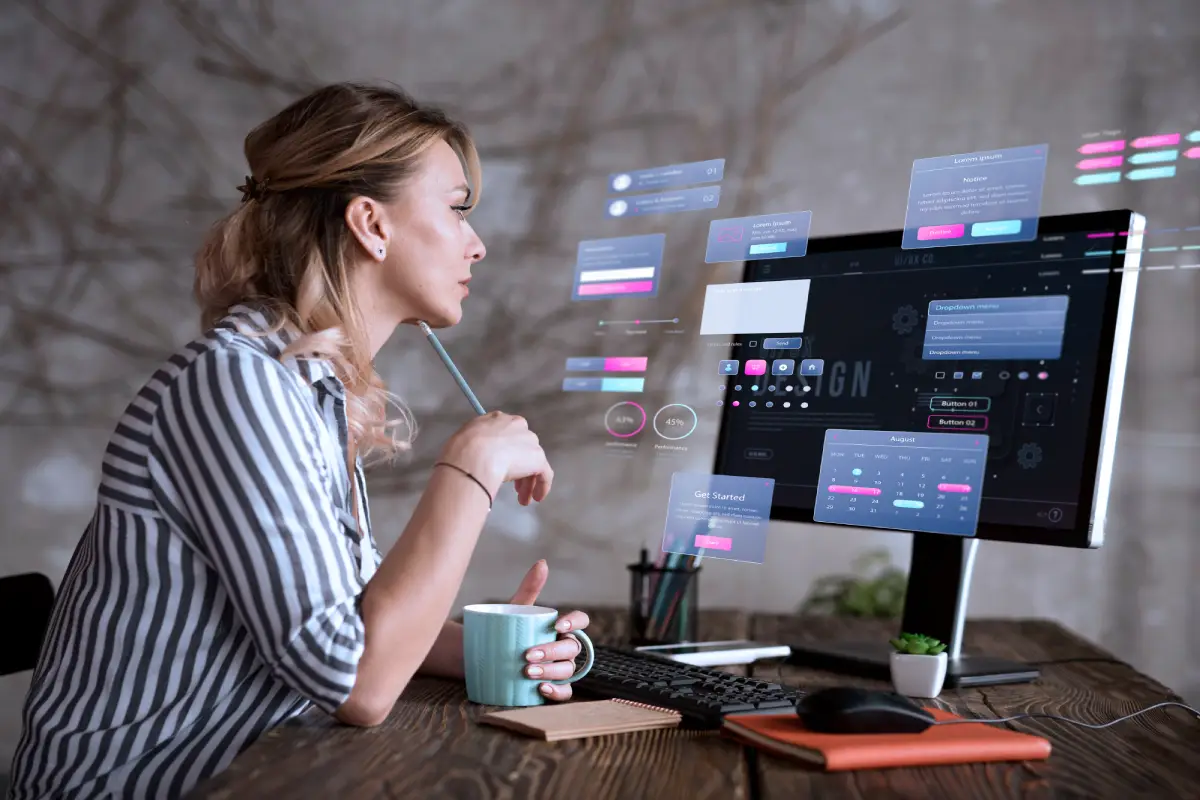A beautiful web design might catch a visitor’s eye, but without usability, it won’t keep them. User testing bridges the gap between how designers think a site should work and how real users actually interact with it. Incorporating user testing ensures that websites aren’t just visually pleasing—but truly effective, intuitive, and user‑friendly.
Table of Contents
ToggleWhat Is User Testing?
User testing (also called usability testing) is a method where real users are asked to perform tasks on a website or prototype while designers or researchers observe, record behavior, and collect feedback.
The goal is to uncover friction points, assumptions, or confusing elements that the design team might have overlooked.
Key elements include:
- Tasks and scenarios: Realistic goals that users must accomplish (e.g. “find product X, complete purchase”).
- Observers/moderators: People who guide or observe the test without overly influencing the user.
- Participants: Users representative of your target audience.
- Data collection: Qualitative feedback (verbal comments, frustrations) plus quantitative metrics (time-on-task, success rate).
Why User Testing Matters in Web Design
- Reveals usability issues you didn’t know existed
Designers develop assumptions; user testing challenges those. For example, a menu label that seems clear internally might confuse real users. - Saves cost and time in the long run
Catching problems early in prototypes is far cheaper than fixing after launch. - Improves conversion and satisfaction
A site that’s easier to use leads to higher retention, lower bounce, better conversion. - Reduces bias & subjectivity in design decisions
Instead of “I think this looks good,” you have data-driven evidence.
When & How to Integrate User Testing
User testing shouldn’t be a one-time step at the end. The most effective approach is iterative and embedded across design phases.
Types of User Testing Methods
Here are common methods used in web design contexts:
- Moderated vs. Unmoderated
Moderated: a facilitator is present, can ask follow‑ups.
Unmoderated: users complete tasks on their own (e.g. remote tests). - A/B / Split testing
Show two versions of a page to different users to see which performs better. - Tree testing / reverse card sorting
Focus on testing information architecture and findability in site structure (menu, category layout) in isolation from design. - Surveys / questionnaires
After tasks, ask users to rate satisfaction, difficulty, or give suggestions. - Pluralistic walkthroughs
Bring users, designers, and developers together and walk through scenarios collaboratively.
Best Practices & Tips
- Recruit representative users
Your participants should closely resemble your target users (demographics, experience). - Define clear objectives
Know what you want to test (navigation, form flow, content clarity). - Use realistic tasks and scenarios
Tasks must reflect real user goals, not artificial puzzles. - Encourage “think aloud”
Ask users to verbalize thoughts as they interact to understand their mental model. - Don’t lead or bias
Facilitators should avoid influencing users or phrasing tasks to guide them. - Analyze both qualitative and quantitative data
Metrics (task time, success rate) plus comments and behavior patterns give full insight. - Iterate & retest
After applying changes, test again to validate improvements—not just once. - Don’t overdo participants
For many qualitative usability tests, 5 users can reveal 80‑85% of common usability issues.
Real-World Impact & Case Examples
- A design agency used three rounds of usability testing and improved conversion rate by over 25%.
- User testing uncovered that mobile users, often holding their phone in one hand, struggled with certain interactive elements; the team adjusted UI accordingly.
- In an e‑commerce context, testing multiple cart flows via A/B tests helped identify which layout reduced abandonment.
These examples show how even small changes informed by testing can yield big gains.
Challenges & How to Overcome Them
- Recruiting the right participants
It can be hard to find users matching your target profile. Use existing customers, social media, incentives. - Limited resources (time, budget)
Even simple testing with a few users is better than none. Use remote testing tools to cut costs. - Stakeholder resistance to feedback
Some design changes may challenge prior assumptions—use data from testing to support decisions. - Test design mistakes
Poorly phrased tasks, leading questions, or overly complex scenarios weaken results. Use peer reviews of test scripts. - Overinterpreting single outliers
One participant struggling doesn’t always indicate a design flaw; look for patterns across users.
Conclusion
User testing is not a luxury—it’s a strategic necessity for creating websites that don’t just look great but actually work for real users. It helps identify friction points, validate design choices, and continually improve user experience through real-world feedback.
At Workroom, we specialize in web design that puts users first. Whether you’re building a new site or refining an existing one, our team integrates user testing into every stage of the design process—ensuring your site performs beautifully and delivers results.
Ready to design a website that users love? Contact Workroom to get started.
Roel Manarang is a seasoned digital marketer and designer with over a decade of experience helping businesses achieve online success. As the Director of Operations at Workroom, he combines his passions for design and marketing to deliver exceptional results for his clients. With a proven track record of delivering exceptional results for more than 100 businesses, Roel is a sought-after creative strategist specializing in world-class content, websites, SEO, and social media campaigns. Find him on Instagram, LinkedIn, and YouTube.
Subscribe And Receive Free Digital Marketing Tips To Grow Your Business
Join over 8,000+ people who receive free tips on digital marketing. Unsubscribe anytime.


